
Cape Verde, or simply known as Cabo Verde is an archipelago or a group of 10 volcanic islands in the North Atlantic Ocean discovered by the Portuguese in the 15th century. Officially called the Republic of Cabo Verde, the natural winds and the crystal clear water of the surrounding sea makes Cape Verde one of the best spots for water sports such as wind surfing, kite surfing deep–sea diving and fishing. The island country is also known for its ‘Cape Verdean’ type of hurricanes, which occurs off its coast. Of all the other islands, the island of Santiago is the most inhabited and is a true representative of the African culture. Despite lacking in natural resources, Cape Verde boasts West Africa’s highest standard of living due to its stable political and economic system. Let us discuss more about Cape Verde.
An island nation in the African continent, Cape Verde is located about 500 km off the coast of Senegal in Western Africa near the major north–south sea routes in the North Atlantic Ocean. Covering a total area of about 4,033 sq. km, it lies between the geographic coordinates of 16°N latitude and 24°W longitude. Stretching a coastline about 965 km, it is slightly larger than Rhode Island and ranks 176th in the world.
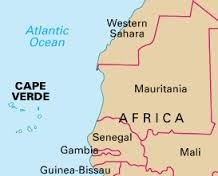
Cape Verde lies in the temperate zone and enjoys a pleasant tropical climate with average temperatures ranging between 26°C and 30°C. It enjoys an uninterrupted sunshine from the month of November to the month of May. The hot and dry ‘harmattan’ winds blow from the months between October–June. It rains from August–October but the rainfall is very scanty and the island has been facing droughts since many years. The terrain is steep, rugged, rocky and volcanic. The lowest point of elevation is the Atlantic Ocean at 0 m and highest point is at Mount Fogo at 2,829 m. The scarce natural resources may include salt, basalt rock, limestone, kaolin, clay, gypsum and fish. It faces natural hazards such as prolonged droughts, a covering of brown dust due to harmattan winds and an active volcano (Fogo). Soil erosion, deforestation, water shortage, desertification, illegal extraction of beach sand and overfishing are a few of the environmental issues faced by it.
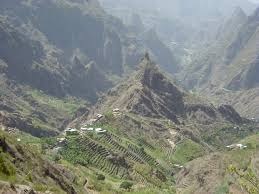
The Cape Verde flora mostly consists of dry forests and shrubs. Semi–desert plants and thorny or toxic shrubs are found in this savannah type of grassland. Vascular trees such as bellflower, sagebrush, wallflower, dragon tree, ironwood tree, fig tree and acacia grow here. In addition, there are pine trees, oaks and sweet chestnuts and eucalyptus. Mammals like grey long–eared bats, feral goats, monkeys and the slender mongoose are found. Birds such as flamingo, vultures, Raso lark, Alexander’s swift, swamp warbler, lago sparrow and shearwater and Bourne’s heron (endangered) are found here. Being a coral reef, various types of dolphins, whales, porpoise, barracudas and eels and the endangered loggerhead turtle and Olive ridley turtles form a part of the marine life.

The role of women in the Cape Verdean culture is very important as they look after the household chores, child rearing as well as take part in activities such as farming, construction and commercial activities. Though women are considered to be equal to men, there are disparities. The legal and church weddings are not common and a girl can leave her house to live with her boyfriend. A relationship acquires the status of common–law marriage after four years of cohabitation. Polygamy is not legal but multiple partners are allowed. Staying together with relatives is a part of the tradition. Children are treated with affection and discipline. There is very little class distinction in Cape Verde as most of the people are poor. There is no upper class and they take pride in their clothing and appearance. Cape Verdeans are extremely generous and hospitable people. Eating in public place without sharing is considered very rude. They are very demonstrative when they meet each other and stand very close and hold hands.
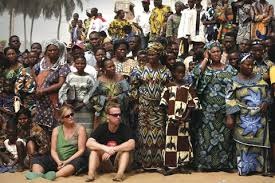
Portuguese, along with Creole (a blend of Portuguese and West African words) is the official language of the people in Cape Verde. A majority of the Cape Verdeans are Roman Catholics (about 77.3%), followed by the Protestants (which includes the Church of Nazarene, Adventists Universal kingdom of God and God and Love) and other Christians (including Christian Rationalism, Jehovah’s Witness, Assembly of God and New Apostolic) and a minority of the population are Muslims.
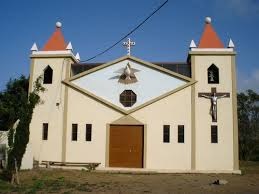
Corn is the staple food of Cape Verde. Their national dish is ‘cachupa’ which is a slow cooked stew of hominy, beans and meat or vegetables. Other common foods include rice, beans, fish, potatoes and manioc. Cuscus, a steamed cornbread eaten with honey and milk or coffee is a traditional breakfast. Their lunch is generally large while the dinner is comparatively light. Grog or sugarcane liquor is manufactured on the island and is a popular drink amongst the men. Xerem, a form of cachupa in which corn is more finely ground is a popular dish during ceremonies and family gatherings.
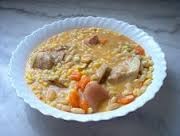
The economy of Cape Verde is dependent on foreign aid and investment and tourism is the main source of income. It is a service oriented economy emphasizing more on commerce, transport and public services. The agricultural products are bananas, corn, sweet potatoes, sugarcane, coffee, peanuts and fish. Industries that contribute to its development include food and beverages, fish processing, shoes, garments and ship repair. It exports shoes, garments, fish and hides and fuel (re–export) to Spain, Portugal, India and Italy whereas it imports foodstuff, industrial products, transport equipment and fuels from Portugal, Netherlands, China, Spain and Belgium.

G Kowledge of | 0 Comments >>
0 Comments
Leave Comment
Your email address will not be published. Required fields are marked.